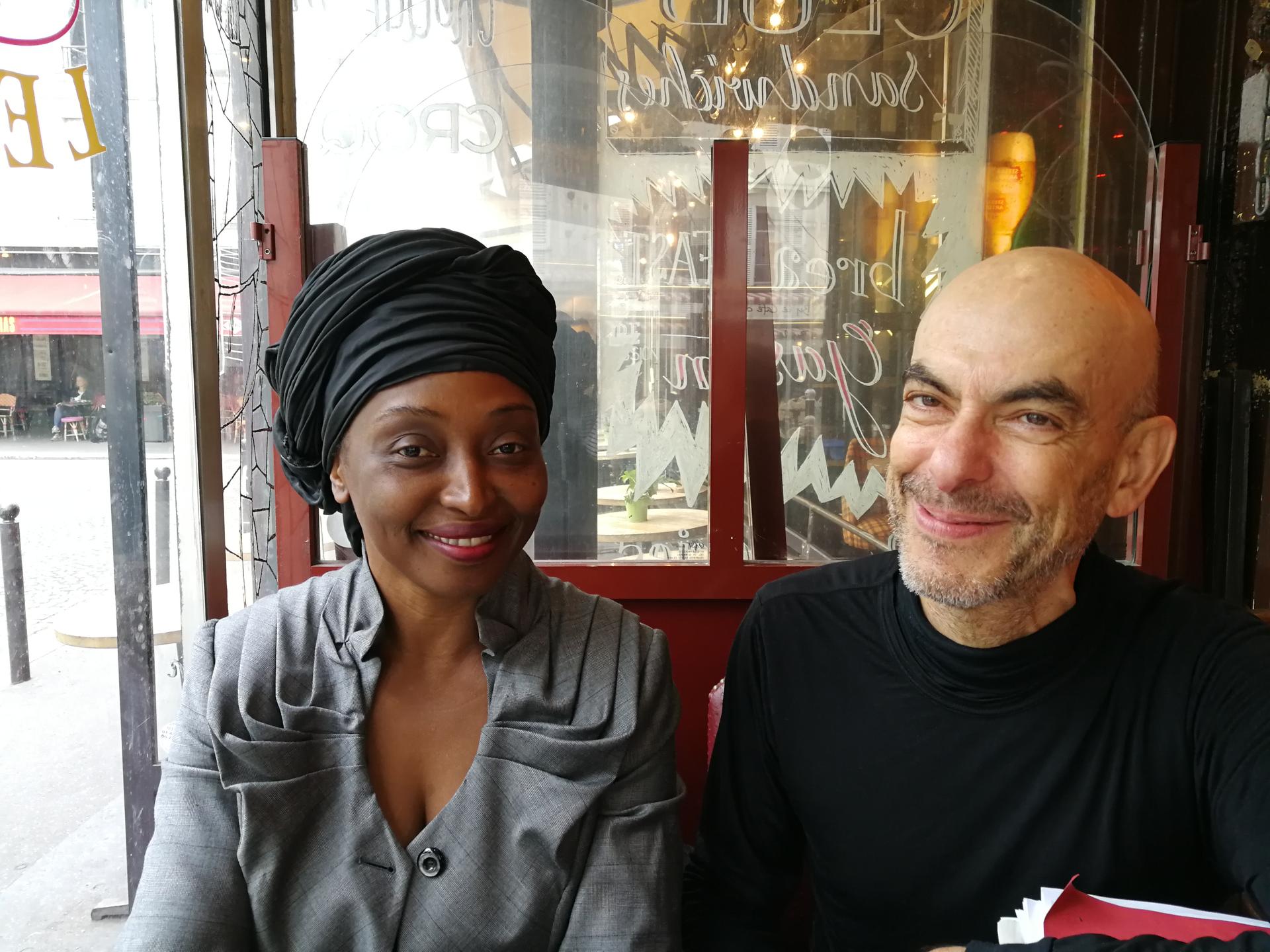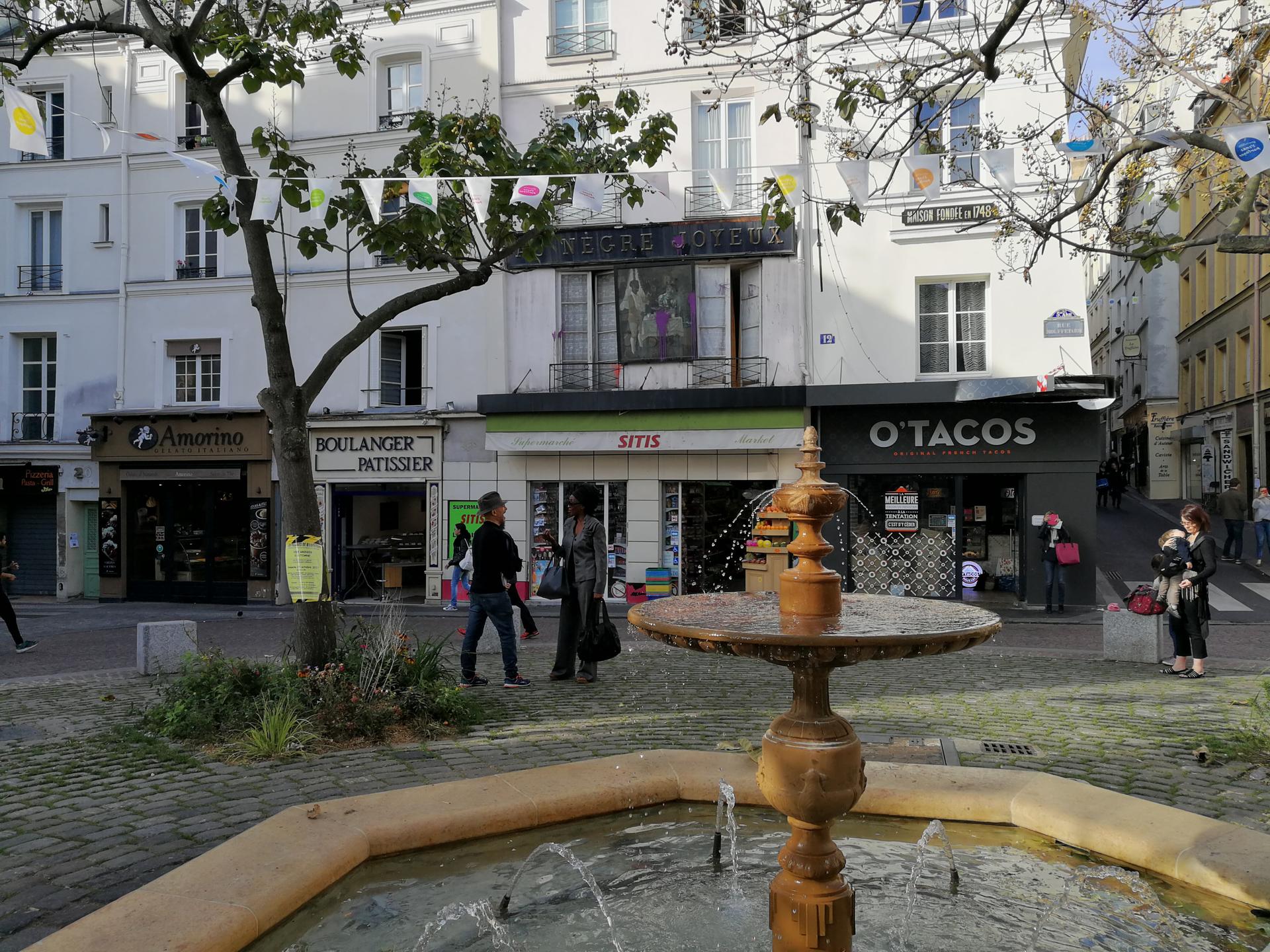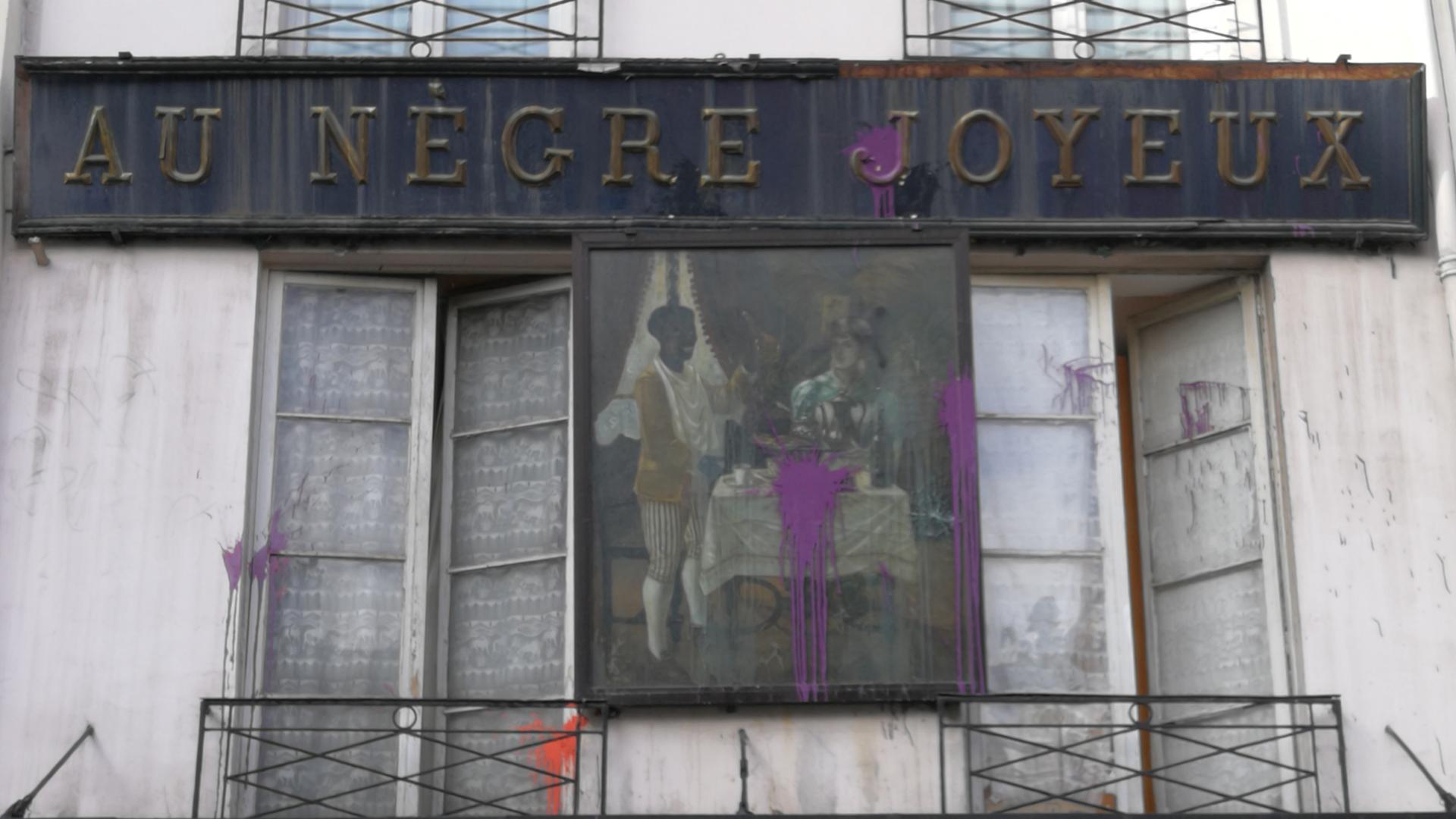This 19th century sign, above a grocery shop in Paris, has been defaced several times in recent years. The Paris City Council has voted to take it down.
When you walk onto the cobblestone streets leading to Place de la Contrescarpe in the Latin quarter of Paris, you’ll see a fountain surrounded by well-groomed trees and old-fashioned cafés.
But you’ll also see an antique sign on the side of a building that’s reignited a controversy. It’s a 19th century painting above a grocery store, showing a black man and a white woman, both in 18th century-style servants’ clothes, apparently about to share a beverage in a sitting room.
Above the painting, in large letters, is the infamous name of the original shop: “Au Nègre Joyeux,” or “At the Happy Negro’s.”
It’s been a flash-point for years.
As the US struggles with whether to tear down or preserve memorials related to the Civil War and symbols of slavery, France has its own difficult colonial past to grapple with. This fall, the Paris City Council came down on one side. It voted to remove the “Happy Negro” painting and sign. But a group of Parisian residents, including Amélie Fabo-Mamet, say that would be a mistake.
Related: What to do with America’s Confederate statues and monuments

Fabo-Mamet and her group say they don’t think the painting itself is offensive. But even if it were, Fabo-Mamet says, it should stay on the wall because it’s part of France’s history.
Fabot-Mamet herself is familiar with that history. She’s lived in this Paris neighborhood for 20 years, but was born and raised in the former French colony of Cameroon. According to Fabo-Mamet and her group, the best thing would be for the city to leave the painting in place, but put up a plaque next to it explaining the history and the disastrous consequences of colonization.
Related: In Texas, a model of what to do with unwanted Confederate statues
“It’s the truth. It’s a trace of history, a basis for discussion” Fabot-Mamet says. “It invites people to look up and talk about it — students, tourists, parents and children. We have to confront our history, and look at it with courage. I think it’s important to leave this painting here and use it as teaching moment.”
But City Council Representative Raphaëlle Primet, who voted to remove the sign, says a plaque would not be enough.
“An explanation on a plaque would not neutralize its negative message,” says Primet. “The fact that the painting has been vandalized several times [in recent years] is proof that many people still find it offensive.”
Related: How Hitler's birthplace in Austria handles its unwanted landmark
Even if the painting can be interpreted in different ways, there is no doubt about its true purpose, says Louis-Georges Tin, head of the Representative Council of Black Associations, or CRAN.
“This image serves colonialist propaganda,” Tin says. “The name ‘Happy Negro’ is meant to give an enchanted image of what was a crime against humanity. It distorts reality by creating an inviting image about a friendly tea-time moment. It must be called what it is — a colonialist propaganda image.”
Related: In New York, this statue causes some students to shudder
Tin says the painting should be taken down and displayed in a museum on slavery — and his organization, CRAN, has been pushing to create just such an institution in Paris. To him, though, the painting is only one of many objectionable signs still on display in Paris — like a 19th century sign made of ceramic tile that depicts a half-naked slave serving a well-dressed white man, in a tropical setting.

Even worse, in Tin’s opinion, is the statue of Jean-Baptiste Colbert, who was Louis XIV’s minister of finance in the 17th century.
“In front of the National Assembly building, we have a statue of Colbert, this minister who legalized slavery,” Tin says. “At the top of the assembly building, it reads ‘Liberty, Equality Fraternity,’ even though Colbert was the enemy of all three. So in France we have a problem recognizing what our values and symbols are.”
Tin goes on to say he wishes French mayors would follow the lead of some American officials who have moved to take down Civil War monuments, especially after the white supremacist demonstrations in Virginia in August.

But in Paris, the Happy Negro sign continues to generate debate and dismay.
When Radia Benefissa stops to look at the painting, she’s not sure what to make of it. Her gut reaction though is “I don’t like it.”
She says the image seems racist to her, though she’s confused by it. Is it about slavery, she wonders, or does the fact that the painting seems to show a man and women sharing a meal of some sort suggest a level of equality? She just doesn’t know.
As for the future of the sign, the Paris City Council had planned to take the painting down the week of November 20, to have it restored before sending it to a museum. But residents who oppose that move have successfully argued for a hearing that could potentially keep the controversial image up on the wall indefinitely.
